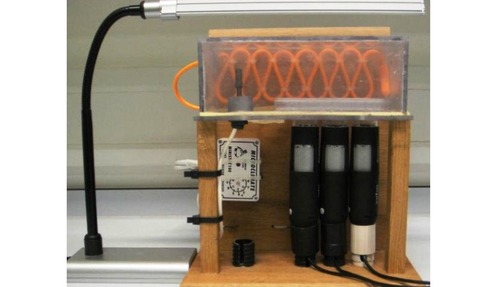DIY microscope 'could save thousands'
26 Nov 2014

A university student has created his own high-tech inverted microscope using a cheap instrument purchased online.
Adam Lynch, a PhD student at Brunel University London, has effectively ’hacked’ his own USB microscope to develop a £160 cell motility measurement device aimed at studying how fast cells move from one place to another.
Lynch’s cut-price microscope was used to study how a snail’s immune system responds to chemical pollutants present in water, which might influence the levels of transmission of Schistosome parasites from snails to humans.
“People don’t realise that you can quite easily make a high-magnification microscope
PhD student Adam Lynch
However, Lynch needed several instruments in order to run multiple tests.
“When you’re looking at motility in cells you’re only interested in the data - how fast the cell gets from A to B means more than a high-resolution image,” Lynch said.
“Even with a high-cost microscope you will reduce the image down so that it’s just a black dot on the screen moving against a white background so that it’s easier for a computer to read.”
Clamping the USB microscope upside down on a table, Lynch was able to produce the same images as the much more expensive inverted microscope.
“It worked ok as I could sort of see cells, which are about 50 micrometres long, but the images weren’t fantastic,” Lynch said.
“But people don’t realise that you can quite easily make a high-magnification microscope, it’s just a matter of getting a lens and the right angle of lighting, so when I turned off the lighting that came with the instrument and used external lights I found I could see the cells quite clearly.”

